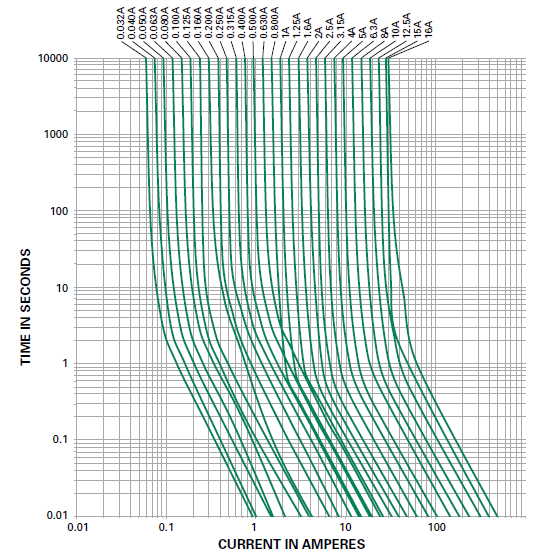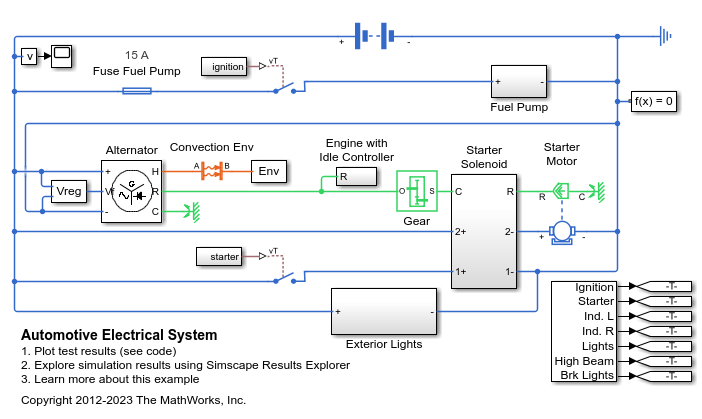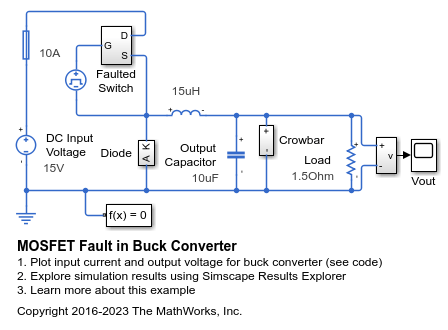Fuse
Fuse that protects against excessive current
Libraries:
Simscape /
Electrical /
Switches & Breakers
Description
The Fuse block breaks the circuit, to protect it against excessive current. The block provides the following modeling options:
Opening time is independent of current— The fuse opens when the current through the fuse exceeds the threshold current continuously for longer than the specified amount of time. This option assumes that the time to open is independent of the current. It also implicitly assumes that heat in the fuse is instantaneously dissipated once the current drops below a certain threshold.Opening time depends on I^2*t— Makes fuse opening dependent on the energy dissipated in the fuse. The nominal melting value (I^2*t) is usually available on manufacturer datasheets. If you select this option, the fuse blows when:where tover is the time when the current crosses over the threshold current, i is instantaneous current through the fuse, and I2t is the nominal melting value from the datasheet. Use this option for high-current range of operation.
Opening time is tabulated— Makes fuse opening dependent on the average time-current tabulated data. This data indicates the time that it takes for the fuse to open given a certain current, and is available on manufacturer datasheets as time-current curves.For example, these are the time-current curves from a Littelfuse® 218 Series fuse datasheet.

Select the appropriate curve and enter the corresponding current and time values into the Tabulated currents and Tabulated opening time parameter vectors, respectively. Use this option for small currents.
Examples
Ports
Conserving
Output
Parameters
Extended Capabilities
Version History
Introduced in R2008b


